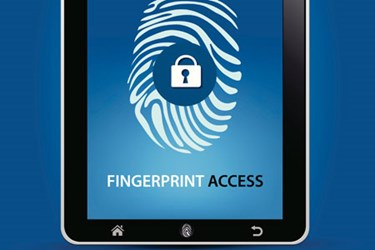Will Biometrics' Fingerprints Be All Over Payment?
By Cheryl Knight, contributing writer

PayPal recently announced it is extending support for fingerprint authentication to the Samsung Galaxy Tab S. In a blog post, Matt Gromada, director of global product launch for PayPal, states like the company’s app for the Galaxy S5, Tab S users can use their fingerprint to log in and pay for transactions with merchants that accept PayPal.
With biometrics technology, using an individual’s fingerprint as an identifier, device users can prevent cybercriminals from accessing accounts. An article in Internet Retailer explains, using a solution from Synaptics and authentication suite from Nok Nok Labs, the Samsung S5 smartphone scans the fingerprint and then generates a number based on three factors: the device itself, the fingerprint, and an encryption key sent from PayPal. This unique number is stored within a secure area on the phone and only provided to PayPal to make a purchase when the user presses his or her finger onto the phone. Joel Yarbrough, PayPal’s senior director of global product solutions, states, “We’ve spent a lot of time over the years building trust with retailers and building a better mobile checkout experience for retailers. The fingerprint scanning feature addresses both of those things, providing a super-secure experience and a delightful buying experience that will increase retailers’ conversion rate on smartphones, where conversion has been lower than on tablets and desktop computers.”
What’s Next?
This development begs the question, “Where do we go from here?”
In June, NFC World reported Groupement des Cartes Bancaires CB, the French bank card association that pioneered the use of chip cards for payments in the 1980s, anticipates member banks issuing key fobs to customers that support fingerprint payments by the end of this year.
Biometrics UnPlugged in Tampa, FL, in September will cover a number of current biometrics topics. Leading up to the event, findBiometrics is offering a series, including an article on banking with biometrics. In the article, Peter Counter writes, “Eyeprints, voiceprints, facial recognition, and fingerprints each have applications in mobile banking, and all of them are easier to use and more secure than a web banking password. Even the notoriously closed off Apple has offered its Touch ID sensor up for the cause.” He reports at the most recent Apple Worldwide Developer Conference, the company announced that with the release of iOS 8 the fingerprint sensor would be open for third-party developers to work into their apps. Apple demonstrated Touch ID on the mobile banking app from Mint.com.
In a recent Visa Europe blog post, Jonathan Vaux, director of new payment propositions, says announcements of emerging technologies that make transactions quicker and easier for the consumer could become preferred solutions —among them is biometric technology, which “offers a further optimisation of the consumer payment experience on smart devices, providing an easy, quick, and secure mechanism to access the card details stored within an app and initiate payment.”
“These announcements serve as a great example of the speed of change in our industry and our need to adapt quickly,” says Vaux. “We are witnessing the evolution of a new digital payment age. We need to develop new standards, processes, and capabilities that help enable these technologies which will, potentially, help us achieve our ambitions to be the world’s most trusted currency and displace cash and cheques. For example, we will need to recognise other forms of authentication, such as thumbprint, in our process flows and evaluate its impact on the commercial framework.”
